Another fabulous music video with the gorgeous and talented Dagny ‘Somebody’

Catch the video here
Directed by Tusk Creative
Styling Kate Ruth
Hair Keiichiro Hirano
Make up by me Jaimee Rose
xx
Another fabulous music video with the gorgeous and talented Dagny ‘Somebody’

Catch the video here
Directed by Tusk Creative
Styling Kate Ruth
Hair Keiichiro Hirano
Make up by me Jaimee Rose
xx
With so many beauty products to choose from, creating a skin care routine that’s right for you can be overwhelming and at times a gamble not only with your money but your skin too. The number of steps in suggested beauty routines always seems to be on the rise…should you be doing to 3, 7, 10, 12???

The thing with skin is that not all beauty products and routines are a one size fits all. One persons holy grail is another’s bathroom shelf reject but by learning and assessing what your skin actually needs you can curate and tailor a beauty routine that’s specific to you. In short, be your own beauty guru.
Some days it’s a good cleanse, spf and go, on others you may find your skin needs a little more attention before going about your day. What remains universal when it comes to skincare is that you layer your products correctly so that they can work at their optimum and always wear broadscreen sun protection.
Think of your beauty routine as consisting of these four groups.
Cleanse, Concentrate, Calm and Canvas.

You can then organise your beauty products within them and layer accordingly.

I prefer to keep my AM routine light, gentle and speedy and keep my actives (chemical exfoliants, peels, masks, retinol ) for PM. I may use a low strength chemical exfoliant of a morning, it just depends on what my skin needs but always finish with a dedicated SPF product before any make up.
You also need to take into consideration what other treatment products you’ll be using after cleansing. Too many high strength actives in your routine can not only impair other products from working if they’re not layered correctly but can also overwhelm and irritate the skin. It’s always best to start with one or two products with gentle formulations to let your skin build up tolerance and always patch test. 🤓
Formula and consistency are also important factors to consider when layering your products as they’ll have a bearing on the speed at which they’ll get to work. Watery/gel like consistencies will deliver quicker as opposed to emulsion/creams which will act more as a buffer to prevent irritation. pH levels are another factor you need to consider when applying active products such as toners, serums and treatments. After cleansing you apply from low to high. The more acidic a product is the lower it’s pH.
A good intro to acids are cleansers and low strength toners. Your skin will have shorter contact time with the active ingredients in a cleanser as you’ll be washing it of rather than leaving it on the way you would say with a toner, serum or mask.
There are active skincare products designed to be used daily but every day chemical exfoliating, especially when you’re just starting out isn’t necessary and will be too much especially for those with sensitive skins.
Go gently and introduce actives one at a time, that way it’s easier to pinpoint if something doesn’t agree with your skin. A tingle is normal and so is a a little redness. It’s also a good idea to try and avoid any unnecessary fragrances in actives, they aren’t useful and can be an irritant.
Before introducing actives/acids into your skincare routine, know your A,B,C’s…

Chemical Exoliants
These groups of glorious skin care acids are designed to chemicaly exfoliate your skin in their own unique way by removing dead skin cells, brighten skin tone, improve skin texture, minimise fine lines, stimulate collagen production, treat and prevent acne , even skin tone and boost hydration and product absorption.
AHA’s are ideal for those with dry, dull, sun damaged, fine lines and acne proned skins.
BHA’s are ideal for oily and acne proned skins but not restricted to. They can be used daily as they’re more gentle than AHA’s but they can also be a little drying if your skin isn’t particularly. AHA’s and BHA’s offer similar skin care benefits, including hyperpigmentation issues. You may find you get on better with a formula that combines both or by alternating them. 🤓
PHA’s are formulated for those who can’t tolerate AHA’s or BHA’s but I really want to stop short and say that even though they’re mentioned online as being suitable for those with very sensitive and or dry skin issues such as eczema, rosacea and atopic dermatitis, please check with a medical professional. The last thing you want to do is further compromise the strength of your skin barrier function.
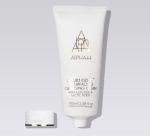 AHA
AHA
Alpha H Liquid Gold Resurfacing Cleansing Cream £36.95
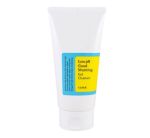 BHA
BHA
Cosrx Low pH Good Morning Gel Cleanser £9.50
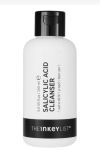 BHA
BHA
The Inkey List Salicylic Cleanser £10.99
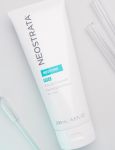 PHA
PHA
Neostrata Restore PHA Facial Cleanser £31
 AHA
AHA
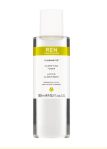 AHA/BHA
AHA/BHA
 AHA/BHA
AHA/BHA
Cosrx Clarifying Treatment Toner £15
 PHA
PHA
Exuviance Soothing Toning Lotion £24.50
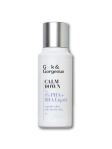 PHA/BHA
PHA/BHA
Geek and Gorgeous Calm Down PHA/BHA Liquid
 AHA
AHA
 AHA
AHA
Sunday Riley Good Genes Glycolic Acid Treatment £85
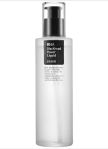 BHA
BHA
Cosrx BHA Blackhead Power Liquid £18.00
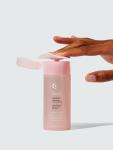 AHA/BHA/PHA
AHA/BHA/PHA
 BHA
BHA
Paula’s Choice Skin Perfecting BHA Liquid Exfoliant £8
 AHA
AHA
Paula’s Choice AHA Lotion Exfoliant £10
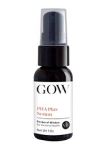 PHA
PHA
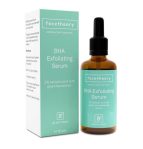 BHA
BHA
Face Theory BHA Exfoliating Serum £18.99
 AHA
AHA
Drunk Elephant Night Serum £76
 AHA
AHA
The Ordinary Lactic Acid 5% + HA £5.50
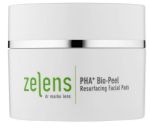 PHA
PHA
Zelens PHA Bio Peel Facial Resurfacing Pads £65
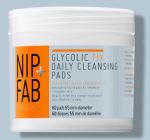 AHA
AHA
Nip & Fab Glycolic Fix Daily Cleansing Pads £12.95
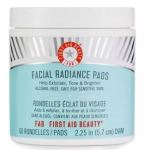 AHA
AHA
First Aid Beauty Facial Radiance Pads £25
 AHA
AHA
Ren Glycol Lactic radiance renewal Mask £36
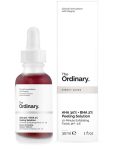 AHA/BHA
AHA/BHA
The Ordinary AHA 30% + 2% BHA Peeling Solution £6.25
Hydration

HA – Hyaluronic Acid. Powerful moisture binding humectant that our bodies naturally produce but decreases as we age. In beauty products it’s synthetically derived (no harvesting from human bodies that I know of) Holds a 1000 Times it’s weight in water. Predominantly used as a hydrating ingredient (also used in fillers).
It’s a great product for those with oilier skins but it has a tendency to be quite drying on others if it’s just used on it’s own. This is down to its water attracting capabilities, if your skin is dry and and your environment is equally so then your not actively getting any more hydration, you’re losing it. In my kit I always keep a few different formulations of HA as some are more hydrating than others.
HA as a topical skin ingredient is not really an anti ager (despite some misleading claims) as the molecules are too large to penetrate the skins epidermis to have an effect on collagen production. It may help smooth the appearance of fine lines by hydrating but it’s not going to erase from them from your life.

Indeed Labs Hydraluron Moisture Boosting Facial Serum £24.99

La Roche Posay Hydraphase Intense Light £13.94

Hado Labo Plumping Perfect Gel £8.32 + shipping £4.93
Antioxidants

L-AA – L- Ascorbic Acid. Water soluble and found in lots of fruit and veg. Very potent, making it the most beneficial and effective form of vitamin C for it’s anti oxidant and anti aging properties. It helps to brighten, smooth, firm, fade sun spots, boost collagen and protect against UV damage caused by free radicals. The L-AA works optimally under PH 3.5 and can be used as low as PH 2.3. Our skin is around PH 5.4 so its potency is not to be undermined. Topically using it at such a low levels in beauty products can lead to irritation for sensitive, dry skin and breakouts for acne proned skins, in which case using a formula that uses a derivative of L-AA is recommended instead. Once applied allow 15 mins before applying another product. The wait time allows you to get the most out of this anti oxidant for its collagen boosting abilities.
Skin care containing L ascorbic Acid needs to be formulated and stored appropriately. Make sure to look for products with airtight and dark/opaque packaging as it’s highly unstable and breaks down when exposed to sunlight and air causing oxidation at which point it won’t be as effective. You will notice this when serums that were once clear have turned a yellowy brown colour. Oxidation also causes a similar coloured tinge on the skin if not used correctly. Thinner consistencies are ideal as they’re absorbed faster into the skin thereby avoiding prolonged contact with oxygen. Applying an oil after helps to act as a sealant giving added protection from oxidation.
Needs to be applied after cleansing onto DRY skin before using any other skin care product that includes acid toners if you use them in your routine. (remember those PH levels..layer low to high).
Brands that formulate their products with other added anti oxidants, in particular Ferulic acid, resveratrol and Vit E, are the ones to invest in as these added antioxidants are highly efficient at stabilising this potent form of Vit C. Concentrations of Vit C ideally need to start at 10 % to be effective.
Potent L-AA

SkinCeuticals C E Ferulic £135
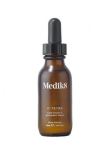
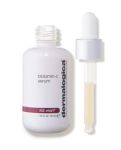
Dermalogica Biolumin C Serum £76
Ferulic Acid – Powerful antioxidant derived from the cell walls of plants such as wheat, rice, peanuts & corn. 🚫 If you have any allergies towards the foods above or are unsure, avoid or patch test before using. Increases and stabilises the potency of L- ascorbic Acid and Vitamin E. Great for dry skins.
Niacinamide – Also known as Vitamin B3. Water soluble. Another powerful antioxidant. Found in many of the foods we eat, from animal proteins, almonds and sunflower seeds. Potential benefits of B3, hydration, anti-acne, anti inflammatory, uneven skin tone, fine lines, improves skin’s barrier function and regulates skins oil production.
Potential irritant to those with niacinamide sensitivity. Symptoms reported are itching, redness and break outs. Always patch test and be mindful of using it alongside actives in your skin care.
Niacinamide has a PH 5-7 so be mindful of combining with with L-ascorbic acid, AHA’s, BHA’s in quick succession especially if you have sensitive skin. Combining L-AA and Niacinamide can cause skin redness and flushing, which isn’t in itself harmful and clears after 20 mins. To avoid this side effect just alternate your actives or wait 30 mins between.
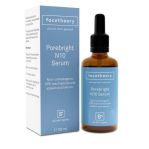
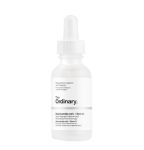
Spot Treatments/Retinoids

AzA – Azelaic Acid. This naturally occurring acid found in whole grain cereals, rye and barley, is a powerhouse when it comes to fighting acne. In comparative studies with prescription retinoids including 0.05 Trentinoin, 5% Benzoyl Peroxide and Accutane, Azelaic Acid at 20% was found to be as equally effective as an acne treatment as Trentinoin and Benzoyl Peroxide. Compared with Accutane both sets of patients were cleared of cystic acne 100% in 6 months but Accutane was around 11-13% more effective than Azelaic Acid in reducing clogged pores, white heads and pimples.
Not too shabby at all in comparison and with less of the side effects typically experienced from using prescribed acne treatments such as dry, peeling, flaky and irritated skin. You can find over the counter without prescription from 8-10% although there are less studies proving their efficacy. However there are many positive reviews online by those who have used them lower concentrations. Azelaic Acid is also used as an anti inflammatory, can help lighten hyperpigmentation, age spots, calm redness, treat rosacea and displays anti bacterial properties. Despite its origins and in case you’re wondering it’s gluten free too. 🤓
Benzoyl Peroxide – A prescription and non prescription treatment for mild to moderate acne that can be used on its own or in conjunction with salicylic acid ( i.e salicylic in your AM routine and BP at night). BP kills the bacteria that causes acne and salicylic acid exfoliates and unclog spores.
To avoid overdrying and irritating your skin which can cause more breakouts use on alternate nights. Concentrations of 2.5%, 4%, 5% and 10% are available over the counter. Always start with the lowest concentration, it’s a very strong medical topical treatment that’s also used as bleaching agent so you must use this product carefully. Avoid contact with hair , clothing and furnishings.
A light, non comedogenic and fragrance free moisturiser can be used before applying BP to act as a buffer. Apply again around 10-15 mins after your spot treatment to keep your skin hydrated and moisturised. Increases photosensitivity, you must wear broad spectrum sunscreen.
If you have dry and or sensitive skin, avoid using this treatment. Results are cumulative and you need to be consistent with application. If you’ve been prescribed BP on its own or in combination with another medical treatment then please use as advised by your medical professional. Do not continue to use BP if you experience stinging, swelling and severe redness.
Retinoic Acid – Differin (adapalene), Tretinoin (Retin A).
Powerful and potent synthetic derivative of Vitamin A. These topical retinoids are prescribed to treat acne and are also used as an anti aging treatment. A number of studies have proven their effectiveness at treating acne as well as reducing fine lines and wrinkles. Differin at 0.01% can be purchased online at Boots but you’ll need to complete an online consultation first. For anything stronger and the Tretinion, it’s prescription only, both are available as a cream or gel. Should really only be applied at night and not consecutively unless advised by a medical professional. Both cause photosensitivity so sunscreen again is a must, at least SPF 30, not an option.
Side effects, dryness, flaking, peeling, redness and itching. Breakouts can occur for acne proned skins but these side effects improve as the skin becomes more tolerant. A light, non comedogenic and fragrance free moisturiser can be used before applying to act as a buffer. 30 -45 mins after you’ve applied the treatment apply moisturiser (again non comedogenic etc especially for acne proned skins) that’s richer, more nourishing and with no alchohol.
Results are cumulative and can take at least three to six months before you see any, patience is key. Should not be used during pregnancy and is not recommended for those who have rosacea or very sensitive skin.
Retinol —Pure form of Vitamin A. In skincare it can be synthetically or naturally derived form of Vit A. Used primarily as an anti aging treatment. Benefits of using retinol, smooth even toned skin, increase in skin cell turnover and collagen production which helps to reduce fine lines and wrinkles.
When applied topically it goes through a two step conversion before turning into retinoic acid. This conversion means it will be more gentle, less of an irritant but work slower than retinoic acid. Retinol comes in different strengths from 0.01% to 2%. Depending on the strength of the formula you may experience side effects similar to retinoic acid but not as severe as many brands have developed formulas that are designed to minimise them so that even sensitive skins can use them. If you experience burning, severe red and peeling skin then stop using. It maybe that you’re applying to much, have used a concentration that’s too strong or you may not be able to tolerate retinol.
It’s essential to find retinol products that are well formulated and packaged. If the retinol isn’t stabilised and the formula is exposed to light and heat, the retinol breaks down making the product redundant. Packaging needs to be airtight and opaque, if retinol degrades before it reaches its target it won’t work. It needs a protective delivery system so it can travel deeper into the dermis where it needs to be effective. Look for brands that label their formulations as ‘stabilised’ or who utilise liposomal, microcapsule or peptide technology so you know the retinol doesn’t go MIA. For acne and oil proned skins avoid oil/silicone based formulas.
To benefit from retinols you need to be committed, it can take a minimum of three months to see results. Start with lower concentrations and use just once or twice a week to begin with. Apply at night to clean dry skin using just a pea sized amount and leave for 30 mins before applying any oils or moisturisers. Should not be used during pregnancy. SPF is essential.
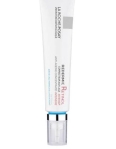
La Roche Posay Redermic R £25.05
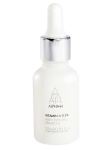
The Routine
You don’t have to have a routine everyday that incorporates chemical exfoliants and other actives. Some days it’s just about keeping it simple by choosing products that cleanse, hydrate and protect. It’s quite easy to end up on autopilot and apply products that your skin might be better of without for a day or so.
CLEANSE

The first and most essential step is a good cleanse. You’re preparing the skin to absorb products that are targeted to your skins needs. Do a good job and your serums, treatments will do theirs.
Wether you make it a single or double its up to you. A single cleanse should be enough in the morning as long as you’ve thoroughly cleansed of an evening to make sure all make up and SPF has been removed.
Cleansers come in a variety of formulas, oils, balms, creams, milks, gels and micellar waters. Look at your skin first thing in the morning, does it need hydration, exfoliation, oil control, or balancing? The drier your skin is then opt for richer formulas. My skin usually needs a little hydration so I love using milk cleansers of a morning and of a night I’ll use make up remover followed by an oil cleanser or balm then an AHA cleansing milk or micellar.
To optimise the rest of your skin care routine you need to use toners. They help prep your skin to absorb more effectively any skincare products you’ll be using next. They’re primarily used for hydrating, balancing and exfoliating. I use one or two depending on what other products I decide to use in the next steps. For example morning is usually about hydrating, brightening and protecting. Some mornings I’ll use a Vit C serum (LAA) and because it’s a fairly potent form of Vit C, I’ll either use a gentle AHA exfoliant or a balancing toner to bring my skin back to its normal PH level (tap water can be anything from PH 6.5 to 9.5, skin is PH 4 to 5.5). To get the most from your Vit C product you need to acidify the skin first.
I’ll leave the Vit C serum to do it’s thing, get dressed, coffee or tea, check e mails etc then I’ll use a hydrating toner mist and apply my moisturiser, a dedicated SPF then make up.
Exfolating toners (AHA, BHA, PHA) can be used in the form of pads, tonics and lotions. There are formulations that can be used daily and stronger ones that can be used at night as a treatment two to three times a week.
CONCENTRATE

If you use eye creams/gels then they need to be applied before serums.
Active skincare products such as serums, masks, peels, treatments fall into this group. Apart from serums and if advised a couple of acne treatments, you pretty much want to use the rest of these products in your evening routine but not consecutively, especially if you’re using a high strength chemical peel. If and when you decide to these I would avoid using any chemical exfoliants and retinoids at least a couple of days either side so you don’t over exfoliate and irritate your skin. Always work your way up with the strength of your actives.
If you’re using spot treatments during the day please apply as advised by the label or a medical professional. Many spot treatment products are more suited to a night routine but some can be applied during the day as long as they dry clear.
Serums are the most potent formula to get your fix of antioxidants and hydration as they’re more concentrated. If you’ve cleansed and toned with chemical exfoliants I would stick to just using serums that calm and hydrate. Use them after cleansing and toning and before your moisturiser. If you want to apply a couple of targeted serums then apply thinnest consistency first. Water before oils. It’s absolutely fine to layer serums that hydrate and calm the skin without alternating days, AM/PM or waiting 30 mins but you need to be mindful with serums that contain actives such as Vit C, retinols, AHA/BHA’s and niacinamide.
Niacinamide + Retinol ✔️
Niacinamide + Hyaluronic Acid ✔️
Benzoyl peroxide + Retinol ✖️
Niacinamide + AHA/BHA ✖️ Unless combined in a formula keep them separate and alternate AM/PM or wait 30 mins in between.
AHA/BHA + L-AA ✖️ Very potent strengths of these products should not be layered in quick succession. It’s fine to use a gentle strength chemical exfoliant if your skin can tolerate both. Otherwise alternate days or AM/PM.
AHA/BHA/PHA + Retinol ✖️ Keep these actives separate. Ideal to use acids for AM and retinols PM or wait 30 mins in between. You could also alternate, so acids one night and retinols another.
L-AA + Retinol ✖️ Keep separate, L-AA for AM and Retinol PM or alternate nights.
L-AA + Niacinamide ✔️ Combined formulas available. If you use them as separates and don’t want to experience the flushing side effects wait 30 mins.
Skin peels and masks can be very potent and I strongly advise you to use low strength gentle formulas if you’ve never used them before and use as directed. Best used in a night routine or if you have no plans and won’t be out in the sun then during the day is fine. Avoid using any other forms of chemical exfoliation and retinols one or two days either side of a peel depending on how strong the peel is. Always follow up with a rich non fragranced moisturiser. If you’re on medically prescribed exfoliant products you should avoid using or (yes I know I keep mentioning it but it’s important) check with a medical professional.
Always patch test.
CARE

All about calming and hydrating and protecting especially after using chemical exfoliant and retinols. Choose from hydrating mists, moisturiser, masks and oils.
Water before oils.
Moisturiser is more effective on skin that’s slightly wet so always prep skin with a hydrating mist before applying.
AM – After your cleansers/exfoliants/eye cream/serums you can use a hydrating mist to prep your skin and apply moisturiser if you feel you need it. Then apply a dedicated SPF
PM – After cleansers/exfoliants/treatments you can use hydrating mists then moisturiser and or oil to lock in hydration. If you’ve applied retinol then wait 30-45 mins before this step. On the nights when you’re not using actives and your skin is feeling a dry then leave on night masks are a lovely treatment to use in between.
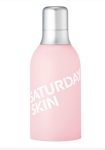



Avene Thermal Spring Water £8.50

Chamomile & Rosehip Calming Day Cream £38
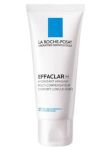
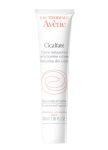
Avene Thermal Cicalfate Repair Cream £7.50

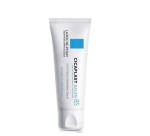
La Roche Posay Cicaplast Baume £6.50
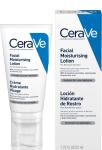
Cerave Moisturising Lotion £12
AM – Apply last on top of SPF or mix a few drops in with your foundation, this method is really recommended for those with drier skins.
PM – Apply after your moisturiser/repair cream to lock in hydration.

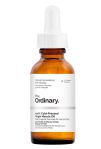
The Ordinary 100% Cold Pressed Virgin Marula Oil £8.10
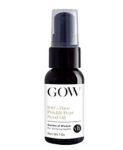
GOW 100% Pure Prickly Pear Seed Oil £20

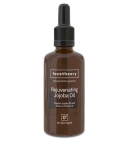
The SPF’s
Let these sink in a good 5-10 mins before applying any oils/make up if you use them.
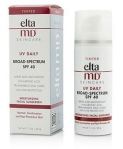
ELTA MD UV Broad Spectrum SPF 40 £24.00

Alpha H SPF 50 Broad Spectrum £29

La Roche Posay Anthelios Ultra Light SPF 50 £12.38
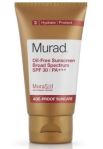
Murad Oil Free Sunscreen SPF 30 £35

Avene Cream SPF 50 Broad Spectrum £12
CANVAS

Primers and foundation.
Not always essential to use both depending on the formula of foundation and quite often I find some SPF’s make good primers. If you do choose a dedicated primer then you’ll want these products to play nicely together. A good rule of thumb is to use from the same brand, if not at least similar or complimentary formulas. Using combinations that don’t mix well, for example a light water based foundation sitting on a heavily formulated silicone primer will go patchy as the day goes on.
Look at the ingredients of a primer and foundation before buying and if one is more loaded with silicones and the other with too many oils it’s going to be a slippy disaster on your face. Too much oil in one and water in the other and it will separate but if the water based has a good balance of oil in it then it should be fine.
If you’re not sure then opt for a foundation that has a built in primer.
Pick formulations based on your skin’s needs.
Hydrating cream/oil/liquid formulas work well for normal to dry skin.
Water based products work well for acne proned/oily skins. Try to avoid products with oils and silicones which can be comedogenic.
Ultimately you need to have a good skincare routine down in order to create a good base before applying primers and foundations. You’ll find products applied after adhere and blend so much better and your make up will last longer.

X
Inspired by the beautiful photography of Robert Mapplethorpe and Edward Weston, I wanted to create a beauty and still life story that explored the uniqueness of what it means to be human.
Photography & Casting- lewishayward.com
Concept, Creative Direction, Make up and Props me jaimeerose.co.uk
Full story http://www.voltcafe.com/editorial/cornucopia voltcafe.com/editorial/cornucopia
In a previous post, I explained how essential a good cleansing regime is in order for any moisturising and anti ageing products to work effectively but had never really considered the effectiveness of the potency in such products and how it was maintained once packaged and on shelves, in particular those with antioxidant properties, until I was introduced to Radical Skincare.
This paraben free brand was created by Liz and Rachel Edlich, who from a young age had grown up with the science of skin rejuvenation and wound repair whilst working in their father’s lab at the University of Virginia Burn Unit. Dr. Richard F Edlich MD.PHD, a world renowned Professor of Plastic Surgery whose own career is nothing short of extremely admirable given his own contributions to the medical world, despite having Multiple Sclerosis he has still continued to carry out his life changing work. Inspired by his sense of purpose, passion and integrity, the sisters forged ahead calling upon the best chemists and scientists they knew to help produce the most powerful skincare possible,yet still sensitive enough to deal with their own skin issues. Liz was suffering from adult acne after turning 46 and Rachel having just given birth to her second child and was having to deal with Rosacea. Within a year they both developed a technology that could protect and repair skin. The potent formula was then combined with soothing agents to reduce inflammation.
So what is the radical breakthrough?
It’s the only skincare that uses Trylacel, a suspension technology that keeps the potency of anti oxidants in creams at their maximum in order to deliver the best results. It was found that when antioxidants are combined with reparative ingredients in creams they break down and become less effective at protecting your skin from free radicals (caused by excess sun,pollution, smoking, stress and obesity), they are the best defence against free radical damage and ageing, so they need to function at their optimum level in order for our skin to obtain the most benefit from them.
The ingredients listed are a powerhouse of antioxidants that include resveratrol (phytonutrient found in dark berries and some plants), coffee berry, acai, grapeseed, red wine extract, pomegranate and cranberry. It’s the combination of powerful antioxidants and the reparative and soothing agents that are held in a bi-lipid membrane that make Radical Skincare 300% more potent than leading brands.
The Facts
The ingredients within Radical Skincare have been clinically proven to:
Impressive claims to make but does it work?
Before I go into the review it helps to understand the ingredients you need to be looking out for and what their function is when it comes to buying anti ageing skin products.
Promote maximum hydration
Encourage skin cell renewal
Does Radical Skincare contain all the above?
With the exception of retinols RS contains the other listed anti aging ingredients and extensive list of other high quality ingredients too but those listed above are pretty much the essentials you really need to be looking for especially where cost is concerned, we’re all to familiar with supposed miracle claims and I only endeavor to write posts about products and brands I believe in.
So do they work?
I have fine lines, my pores are more noticeable and my eyes are certainly puffy in the morning and where these little matters are concerned I’ll answer in short, a very impressive yes. For a month I trialed the Hydrating Cleanser, the age defying exfoliating pads, the Peptide Infused Antioxidant Serum, Restorative Moisture Creme and the Eye Revive Creme. It’s a bit of a regime and I don’t usually use all one brand when cleansing and moisturising so I was a little concerned about product overload on my skin but throughout each step the products work in harmony and any acidic properties are calmed by the soothing ingredients so as not cause any irritation. The only product that may cause any if it all is the exfoliating pads, as they contain AHA’s but a little tingling is normal and it’s this product that really mops up skin debris, firms skin, tightens pores and allows other active ingredients to penetrate the skin more effectively. The serum and moisturiser feel amazing on the skin as they’re incredibly light in texture but kept my skin hydrated all day thanks to the Sodium Hyaluronate that’s in the serum. The only downside as with many high end products is that it is a little expensive but If I had to make a couple of choices it would be the exfoliating pads and the Peptide Infused antioxidant serum.
I really love the products in the Radical Skincare line otherwise I wouldn’t have wrote such an extensive post but when it comes to anti ageing there are many products that are best kept on the shop shelf in my opinion and if this brand is a little too expensive then at least you’re armed with better knowledge of what you need to be looking for if you want find a cheaper option.
Just keep in mind, that although good quality anti ageing products can do a lot of good to sun damaged and wrinkled skin, you will benefit far more from their use if you start to use them once fine lines or any noticeable UV damage starts to show.
Prevention is always better than a cure 😉
X
Safety concerns over chemical sunscreens that work by absorbing the sun’s rays as opposed to physical which deflect or block them have come to light in the public domain. Is there any validity in the claims that these products created to protect our skin could also be the very thing that’s harming us?
Over the last couple of years the ingredient oxybenzone and its use in chemical sunscreens is raising a number of concerns. According to the Environmental Working Group (EWG) “it seems able to penetrate the skin and may have some hormone-like activity in the body”, otherwise known as a hormone disruptor. It’s also a derivative of benzophenone which can attack DNA when it’s illuminated. So whilst you’re out sunbathing the sun literally acts a light switch for an increased production of free radicals, which are the very things your sunscreen should be protecting you from. It seems counterproductive to say the least.
With a little research I found that products only have to label “contains oxybenzone” if it contains 0.5% or more, so even if it’s not labelled it could still be present but according to The Skin Cancer Foundation, “there has never been any evidence that oxybenzone, which has been available for 20 years, has any adverse health effect in humans. The ingredient is FDA-approved for human use based on exhaustive reviews” The SCF then dismissed the EWG findings as nothing more than the result of “junk science”.
So it’s ok as long as it’s not adverse..? I would’ve thought that if there was an alternative for using sunscreen that’s just as safe and effective without the addition of chemical nasties then all sides would be championing that but I guess it’s only the non profit organisation EWG who seem to be… We could open up a whole pandoras box here of nasty ingredients that regulatory bodies have allowed to slip into many foods, drinks and cosmetics but that’s a whole other issue.
Another growing concern is the continued use of Vit A (retinyl palmitate) to be added to many sunscreens and cosmetics, despite growing scientific evidence that they to pose safety concerns for sun exposed skin,
“In December 2010, the FDA and NTP teams published a draft report consistent with EWG’s findings. On January 26, 2011, the NTP Board of Scientific Counselors unanimously adopted this position. (NTP 2010, NTP 2011). The NTP published the final report on this project last year (NTP 2012). In it the NTP concludes that both retinyl palmitate and retinoic acid, another form of Vitamin A, sped up the development of cancerous lesions and tumors on UV-treated animals.”
Despite the findings it appears the jury is still out as to wether Vit A in sunscreens can be detrimental on human skin tissue when exposed to sunlight but it doesn’t make sense that an SPF should contain it as an ingredient. Its use in anti ageing products is well known but anyone who uses retinols are always advised to avoid the sun or at the very least be vigilant with sun protection, so why add it? Even if the Vit A is watered down by the addition of other ingredients it can’t then be of much an anti ageing benefit but they’ll cost you more for the small added pleasure.
With so many products coming under the spotlight of safety lately you’re sunscreen should be of the least concern and perhaps there really is nothing to worry about with regards to chemical sunscreens but who knows what the accumulative damage is with use of these products, particularly in mothers who breastfeed and young children. Also not forgetting the damage it’s already causing to our environment by polluting our water sources, simply from our sunscreens washing of once were in the water.
“Researchers estimate that 4,000 to 6,000 metric tons of sunscreen wash off swimmers annually in oceans worldwide, and that up to 10 percent of coral reefs are threatened by sunscreen-induced bleaching.”
“Make sure your sunscreen is a physical sunblock, which means it would only have zinc oxide or titanium dioxide. Also read the label and choose better ingredients like shea butter, cocoa butter, plant oils and avoid synthetic ingredients like fragrance.”
Many physical sunscreens are now much lighter in formulation compared with the thick gloop of the past so you won’t be left with that annoying white film on your skin. Those with skins that are very fair and sensitive to chemical sunscreens should opt for physical sunscreens, one of the best things though about them is that they work straight away. If using a chemical sunscreen doesn’t bother you then it’s still a good idea to opt for formulations that are lighter in chemical filters.
So what to use then? Well there are a few brands that I use personally as well as in my kit for jobs on location shoots but I’ve also been on the hunt for other options and I’ll continue to update with suggested products but if anyone else has any others that are tried and tested I would be more than happy to add them to the list on this post. Just remember that even though the list below consists of products with SPF30+ does not mean you can stay in the sun all day without reapplying. You need to do so at least every couple of hours. Obviously it goes without saying that the sun is a great source of Vit D and we still need to absorb the suns rays in order to beneft from it, so you don’t need to cover yourself top to toe 24 hours a day just be sensible and don’t allow yourself to burn.
For very fair skins that are aggravated by chemical sunscreens
Alpha H Ultra Protector SPF 30 RRP £30
Dermalogica super sensitive shield SPF 30 RRP £38.10
Clarins Sun care cream High Protection SPF 30 and 50 RRP£18.00
Clinique City Block SPF 25 RRP £16.00
Avene Sun Care Very High Protection Mineral Cream SPF 50 RRP £13.50
Heliocare Gel SPF 50 RRP £20
A great lighter chemical filter option is that of La Roche Posay Anthelios XL SPF range which is available from Boots prices retail from around £14.00
I really want to get hold of Banana Boat’s new mineral SPF 30 but sadly not available in UK at the moment
http://bananaboat.com.au/products/mineral-protect-kids-spf-30-120g/?v=natural&f=usage
Other brand suggestions can be found on the Lovelula website and they have SPF”s from 15+ if you still want to tan.
http://www.lovelula.com/cat_organic_skincare_spf_protection.cfm
Listed below are a few links that I’ve sourced for this post. Please take a look as they’re full of information and the best thing anyone can do is to be armed with a little knowledge especially when it comes to the health of your skin.
http://www.skinacea.com/sunscreen/physical-vs-chemical-sunscreen.html#.Ub8CVfm9Wdk
http://www.ewg.org/2013sunscreen/9-surprising-facts-about-sunscreen/
http://www.ewg.org/2013sunscreen/whats-wrong-with-high-spf/
http://samvidbeauty.com/2011/07/the-effect-of-sunscreen-on-our-environment/
A wonderful insight into the collaboration between Val Garland and Alexander McQueen. Val has created many truly unforgettable and iconic looks for the McQueen shows.
During the beginning, the screens flashed through many of Val’s stunning editorial and catwalk creations that she’s so well known for. Many were then brought to life by the models who then took to the catwalk, marking a beautiful visual history of collaborations that included Alexander McQueen, Vivienne Westwood, Lady Gaga, Nick Knight, Tim Walker and Mario Testino,
Each of the models then took to the front stage to be seated where Val would then create signature looks from past Vivienne Westwood and Alexander McQueen shows. Behind each make up creation was a story and a journey of her career so far.
Whilst blending, lining, glossing, squiggling and face glitter dipping she talked us through the concept of beauty ideas and how something so wrong can be so right, ideas that are so simple can still be so magical, yet also when to know not to throw everything but the kitchen sink into an idea, “Be more than a make up artist, be an artist!”
Watching and listening to Val Garland reminded me that every make up artist/artists really does have their own footpath to follow. There’s always an element of luck involved but it doesn’t keep you places without the addition of hard work. It’s also realising when opportunities are presented to you and making the best out of the connections you make along the way are what can get you far in this industry. Don’t compare yourself to others but be inspired and be intuitive enough to follow what you believe is right for your career.
X
My collection of brushes for work is vast to say the least but out of all them there are around ten that I repeatedly use on shoots. There’s five I use for eye make up application for blending, contouring, defining and lining. Three which I use for applying foundation, concealor and cream/liquid colours. The other two are used for applying powders,blushers and bronzers. I also use them to shade and buff the make ups I create for a flawless finish.
To purchase ten brushes can be quite costly and probably not necessary for many of you but I always get asked how to do a smokey eye or how to contour in order to create the illusion of cheekbones and without the right tools it’s not particularly easy to get across how to do it. I find that the brushes that come in many make up compacts are just to flimsy or to hard and are therefore inferior in their application of the product in hand. I’ve encountered many a woman and girls make up bag that contains these “kinds of brushes” but what’s the point of spending all that money on great make up if you can’t apply it properly?
Recently I was given some new brushes “Real Techniques” to try. Created by pro make up artist and beauty blogger Samantha Chapman, I had the “Your eyes enhanced” starter set, “Your base/flawless” expert face brush and the “Your finish/perfected” Kabuki brush. All are hand cut with ultra plush taklon bristles making them 100% animal cruelty free. All are now staples in my brush collection.
My personal favourite is the flawless face brush (2nd brush from left) which I’ve been using to apply cream and liquid foundation as well as cream blushers. The beauty of the brushes (other than the price) which you will find when you view the online tutorial that features Sam herself, as she guides you through each of the collections, is that they can have multiple uses for other than what they’ve been labelled as.
The starter set for eyes is a great beauty purchase at £21.99 and I love the Base Shadow Brush and Deluxe Crease Brush (3rd and 4th brushes from left). These particular brushes are very similar to another brand which I use when applying eye make up and they will make creating that smokey eye so much easier for you! Click the link below to see how it easy is.
http://realtechniques.com/the-brushes/starter-set-tutorial
The Kabuki brush is a genius little invention in that in it’s closed position it acts as a powder brush for finishing powders and when opened, you can use it to sweep colour on and contour.
There are many other brushes in the Real Techniques range and if you only want to opt for what I’ve featured here or less on this blog they’re still a brilliant beauty investment for you and your make up. Not only will you be getting great quality Hi Tech brushes but also great advice on how to use them!
http://www.realtechniques.com/videos/blog
Expert Face Make up brush RRP £9.99
kabuki Brush RRP £11.99
So let’s start from the beginning.
Skin, our very own protector and guardian, protecting the body from water loss and shielding us against external damage that comes from UV rays, chemicals and infections. It fights a constant daily battle with the frequent hot to cold and cold to hot thanks to moisture sucking central heating and aircon and for a while it seemingly puts up with bad diets, excessive alchohol consumption and smoking but eventually all these factors take it’s toll, leading to our decline in collagen and elasticity production that causes premature ageing.
Obviously genetics play their part here to and your parents are a very good indicator as to how you yourself are likely to age, so if they’ve adopted bad habits that have speeded up the ageing process then it’s very likely that you to will be affected in the same way if you adopt similar lifestyle choices.
Our skin after all is a projection of the state of our health and people subconsciously respond to it good or bad depending on how healthy we look and as its the bodies largest organ consisting of three layers, the epidermis (upper layer of the skin), dermis (middle layer) and the subcutaneous layer (lower), all three need to be maintained for skin to be at it’s healthiest and youthful.
When it comes to problems with our skin we often think the way to treat it is just with topical solutions rather than a holisitic approach. So we need to be doing our best to eliminate or at least try to cut down on any of the aforementioned bad habits Eating a diet rich in antioxidants/essential fatty acids, exercise, sleeping well and drinking plenty of water will help to maintain all the layers of our skin, starting with the deepest layer, the subcutaneous. It’s mostly made up of fat and is essential for our skin to function normally, any significant loss here contributes greatly to ageing and once the skin loses it’s elasticity and collagen in the next layer, the dermis, it then becomes weaker and poorer at maintaining the supply of nutrients and water which is vital for the epidermis (surface of our skin) to regenerate new skin cells. This is why skin then starts to sag, wrinkle and become thin, so you really need to look after skin from inside out.
Having a good skincare regime is also important, it goes a long way to help rejuvinate and kick start the skin cell renewall process and cleansing should be the one area in which your attention should be the primary focus. Without proper cleansing, other products that you use wether it be primers, serums, night creams etc won’t work as efficiently.
Regardless of what type of skin you have cleansing should be gentle and thorough, not abrasive and harsh. Doing so only over stimulates sebum oil production in the dermis which leads to pores clogging. The purpose of cleansing is just to remove make up, grime and dead skin cells on the skins surface, not a full scale attack.
Cleansers come in all sorts of varieties, gels, oils and creams and so on but I’ve listed below my favourites that cover all skin types. You will find that your skin type may change from week to week or month to month. It can be affected by the weather, hormones and other environmental factors so you will need to adapt from time to time the products you use depending on the current condition of your skin.
OIL CLEANSER
Shu Uemura Skin Purifier ultime8
One of my absolute favourite cleansers ever! I use it every night as it completely dissolves any make up and impurities on the skin, you only need a few little drops from the dispenser to massage on the face, then add a little warm water to emulsify it then you rinse of with warm water. It contains 8 botanical ingredients that target 8 different skincare concerns, to then provide you with 8 skincare benefits. It’s a little pricey at £34 for 150ml bottle but because it’s so replenishing and nourishing you may find you could skip the need for a moisturiser.
GEL CLEANSER
Alpha-H Triple Action Cleanser
This is my go to cleanser if my skin is feeling a little oilier than usual. It’s so gentle at mopping up any excess oil on my skin but very effective at removing all traces of make up whilst still maintaing a healthy pH balnce in my skin, thanks to it’s soothing cucumber, hydrating Aloe Vera and Thyme wich acts as a natural anti- bacterial. I’ve recommended Alpha-H to a lot of people who’ve been seeking products that are effective at dealing with their skin concerns, from acne, open pores, pigmentation and sensitivity amongst others and I’ve heard nothing but great results. In my opinion one of the best skincare brands across the board.
CREAM CLEANSERS
Alpha-H Balancing Cleanser
Another 3 in 1 cleanser from Alpha-H except this one is cream based and is rich in Vit E and Aloe Vera so it has great antioxidant and soothing properties. Ideal for all skin types, it serves as a make up remover, facial wash and toner.
LANCOME GALATEIS DOUCEUR
Gentle Softening Cleansing Fluid Face and Eyes
A great cleansing product I love to use on shoots as it’s very quick at removing stubborn make up and leaves their skin super soft. Once you’ve applied the cleanser you only need a soft tissue to remove any residue but i usually spritz a piece with a rose or lavender infused toner if a model has oily/combination skin before removing.
CLEANSING MILK
Dermalogica Skin Resurfacing Cleanser
This cleansing product from Dermalogica contains Lactic Acid (Alph-hyydroxy acid) it’s a naturally occurring substance in milk and dairy products that’s ideal for those with sensitive skin as it’s much less potent than Glycolic Acid which is another natural substance derived from sugarcane. This product works by retexturising the skins surface by removing dead skin cells and accelerating skin cell renewal. It’s perfect for those with skin that has a tendency to be dry and because it has an AHA in it, it allows other products you apply to penetrate the skins surface a little more deeply thus making whatever you use after cleansing much more effective. Just remember to make sure you apply an SPF as use of AHA’S make the skin more sensitive to the suns UV rays.
CLEANSING WATER
Beauty cleansing staples in many a make up artists kit. They remove make up up from eyes, face, lips quickly and efficiently without any need for rinsing of. A brilliant timesaver when I need to create different looks on models without aggravating their skin, as they have very soothing and hydrating properties. I wouldn’t use them as a constant alternative for a thorough cleanse but they’re perfect for quickly removing make up after a heavy night before crashing into bed, when rushed for time in the morning or even if skin needs a little refresher throughout the day. They’re also great to use as toner after using oil based cleansers.
Eau Micellaire Douceur
Bioderma Crealine H20 Micelle Solution
The subject of skincare is ever evolving but I hope you find this post on cleansing, sheds a little light on the story so far.
X
Beauty images shot by Matthew Donaldson